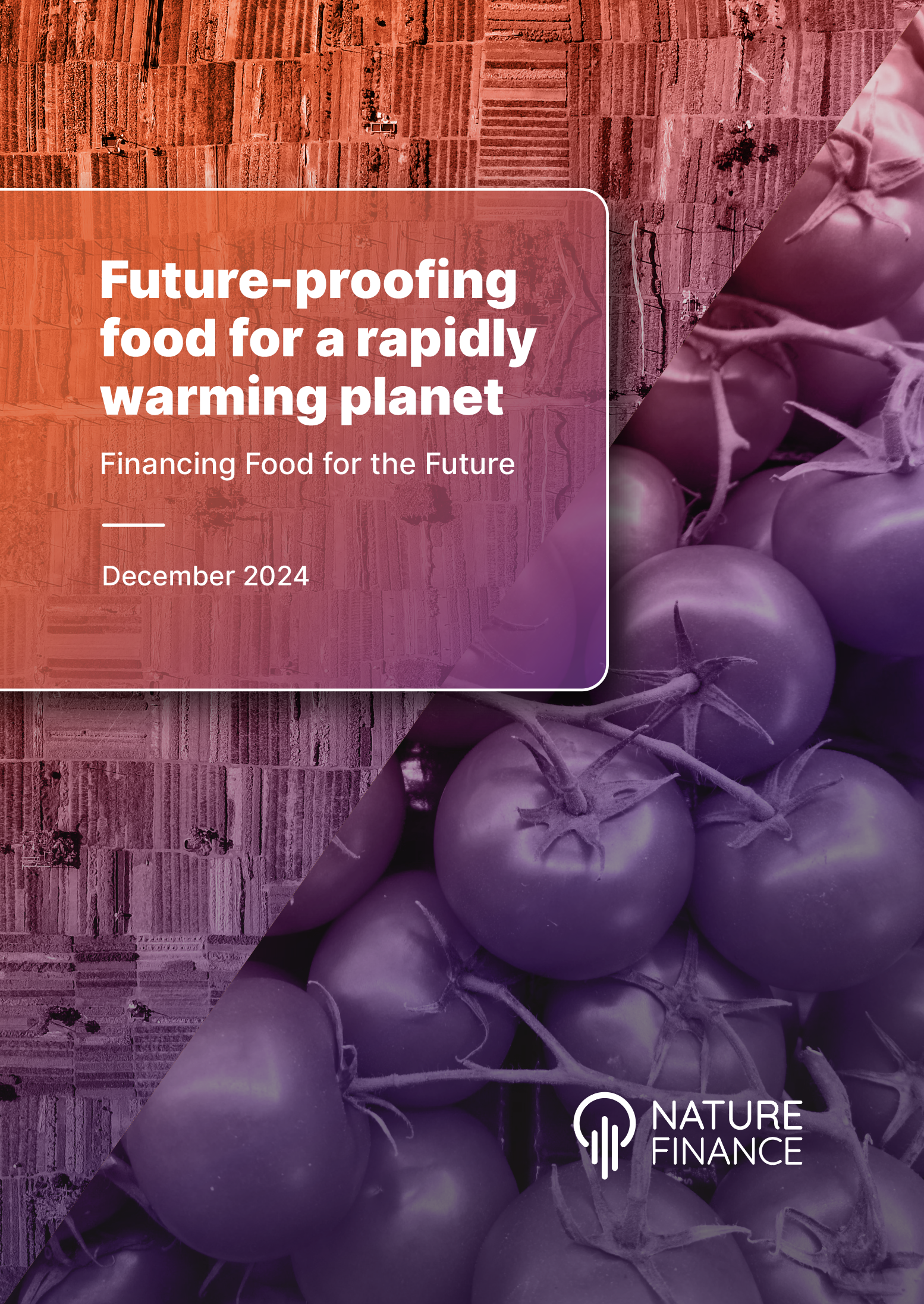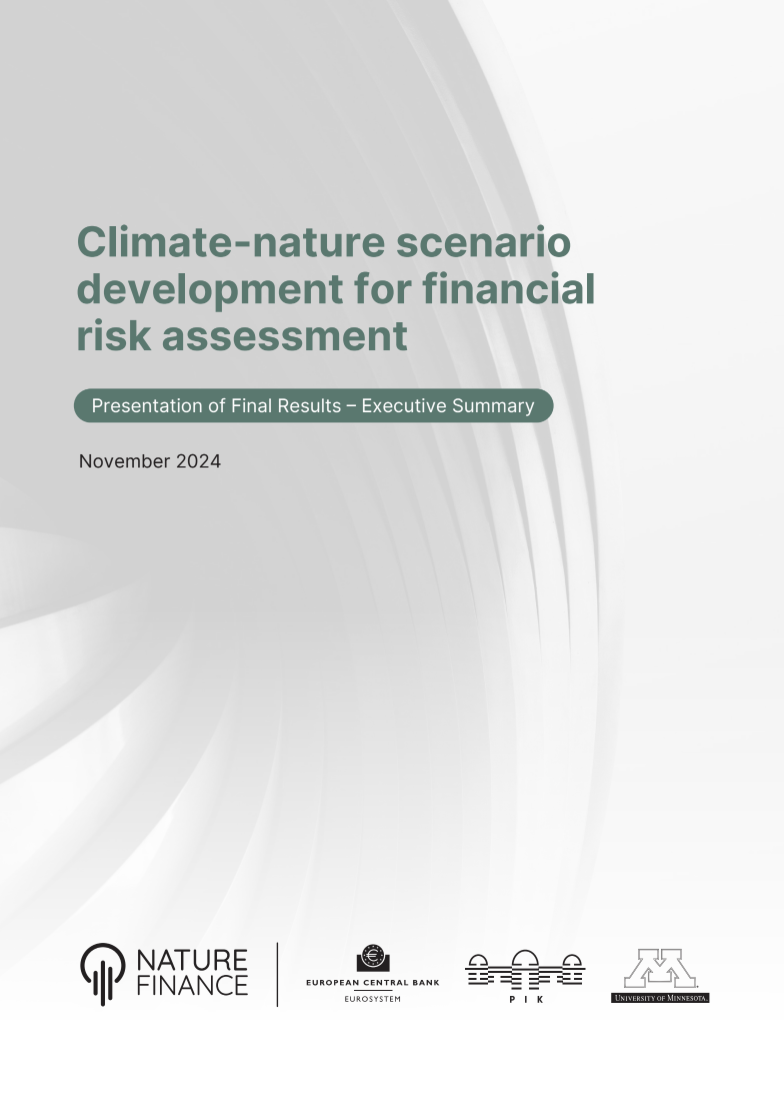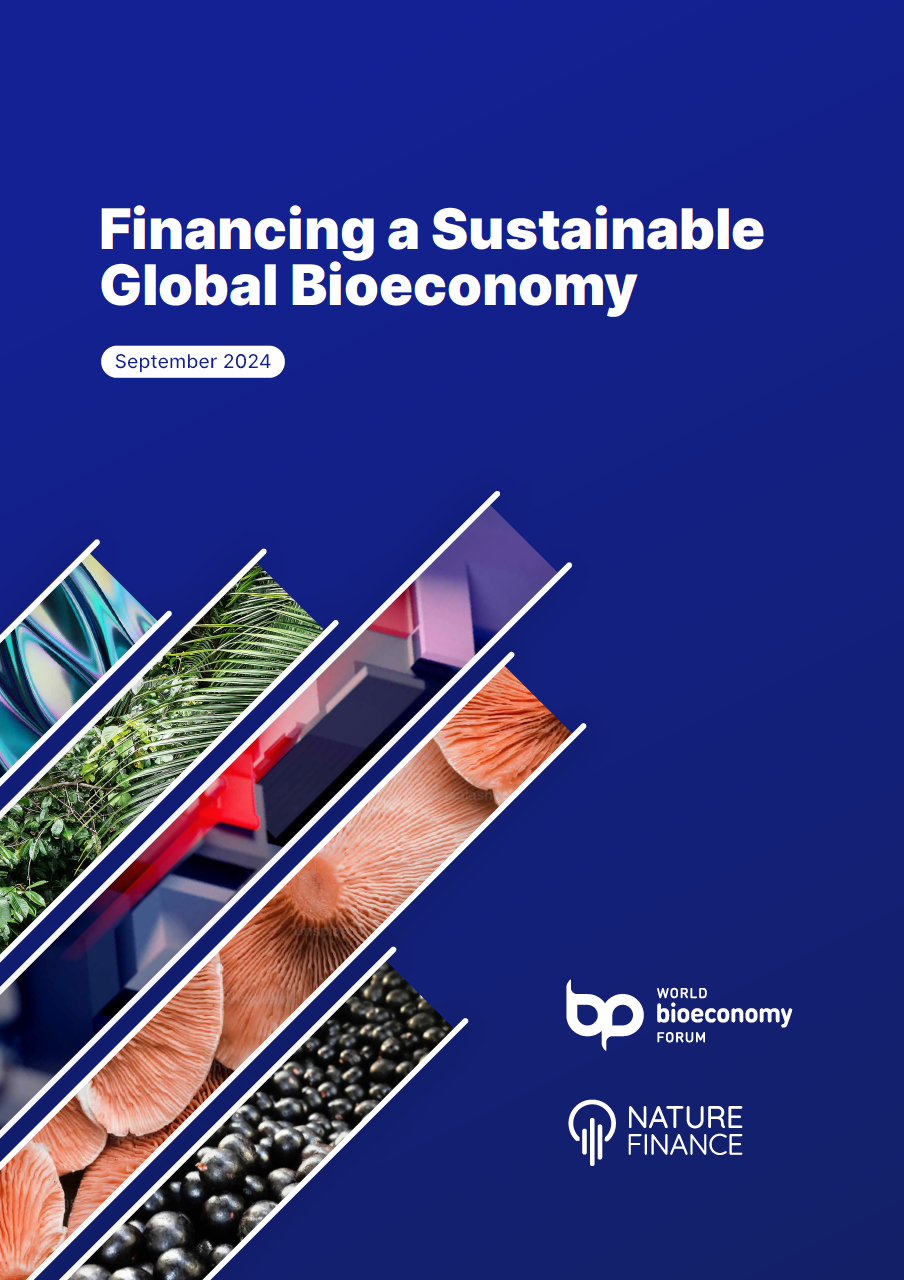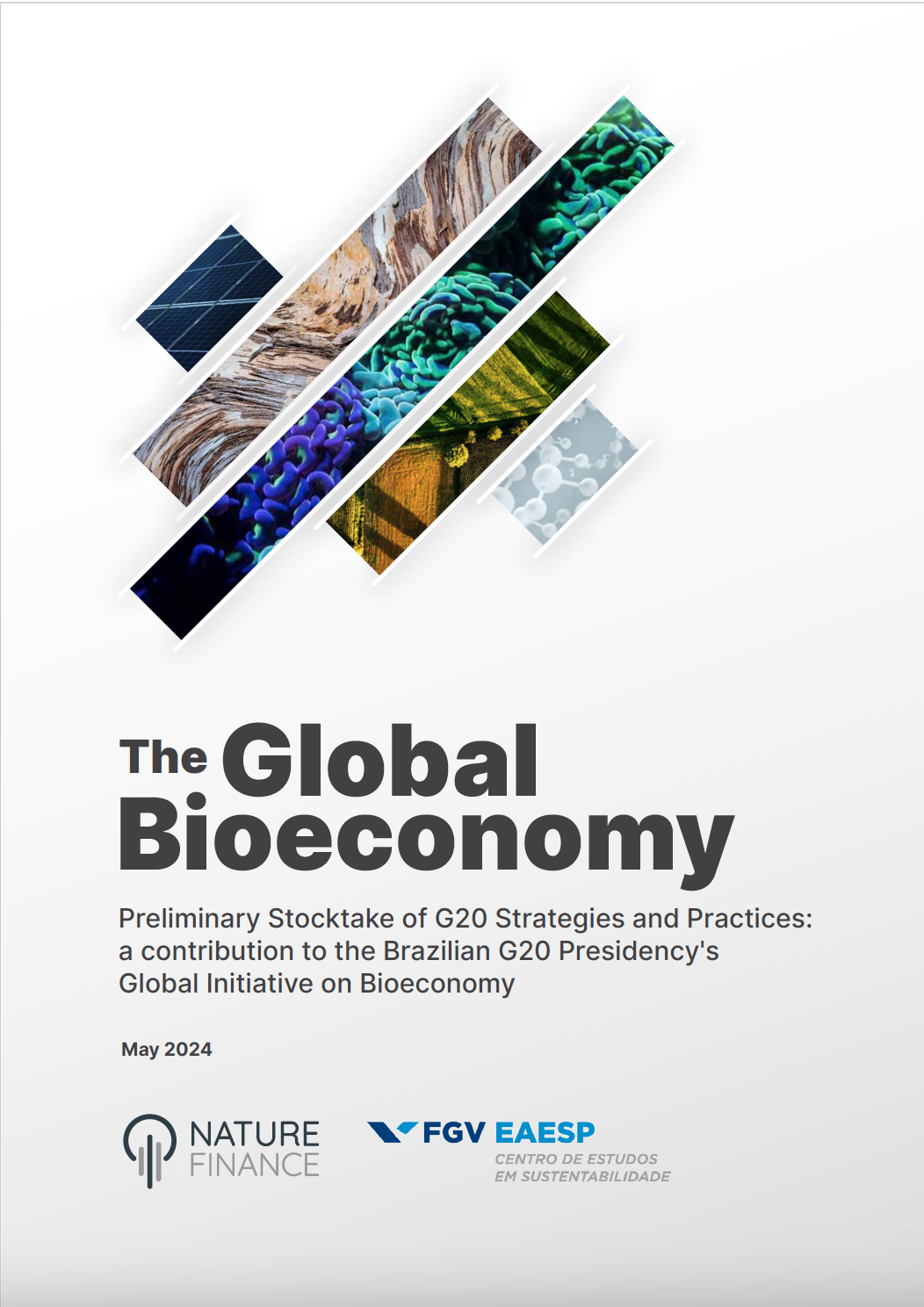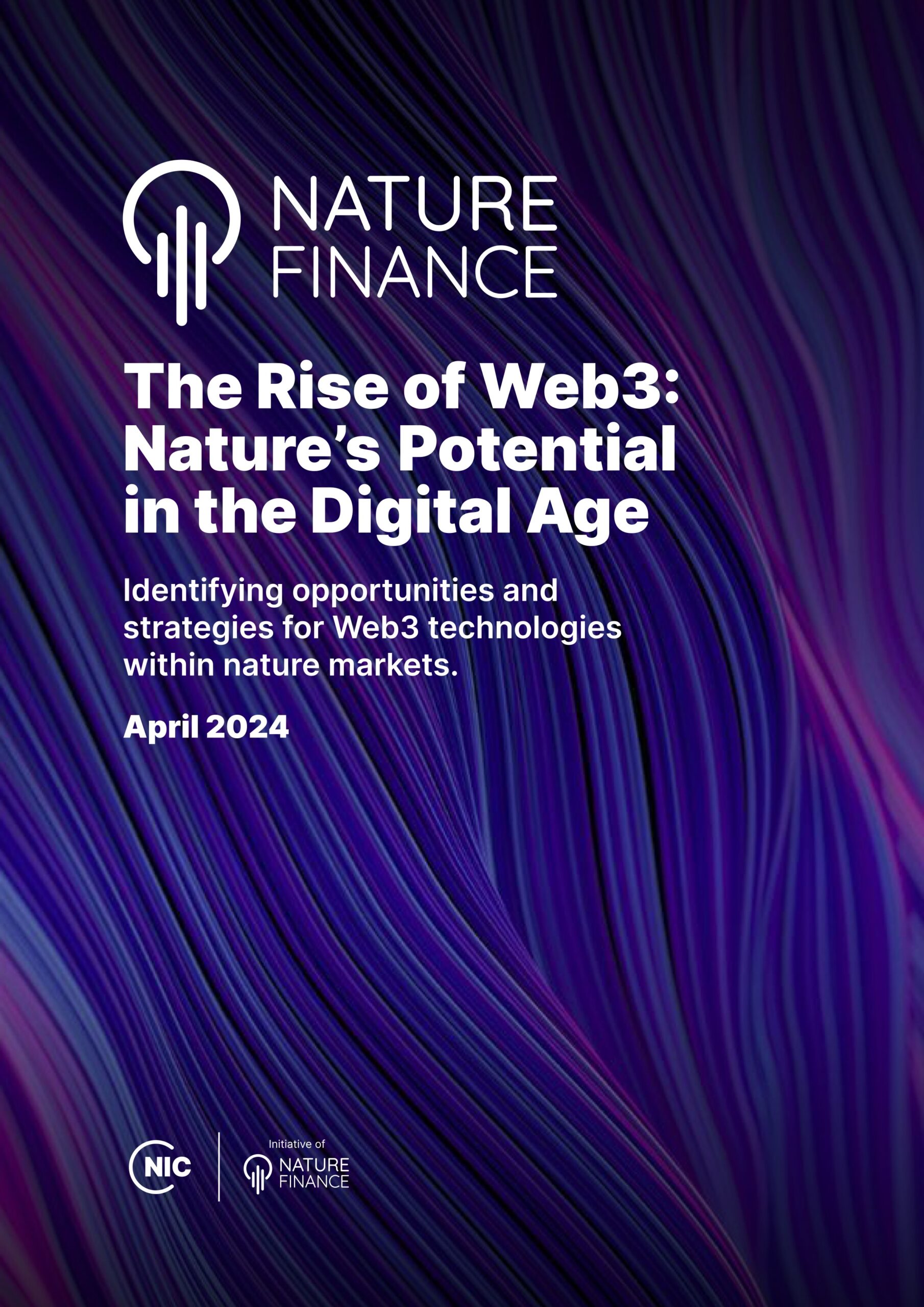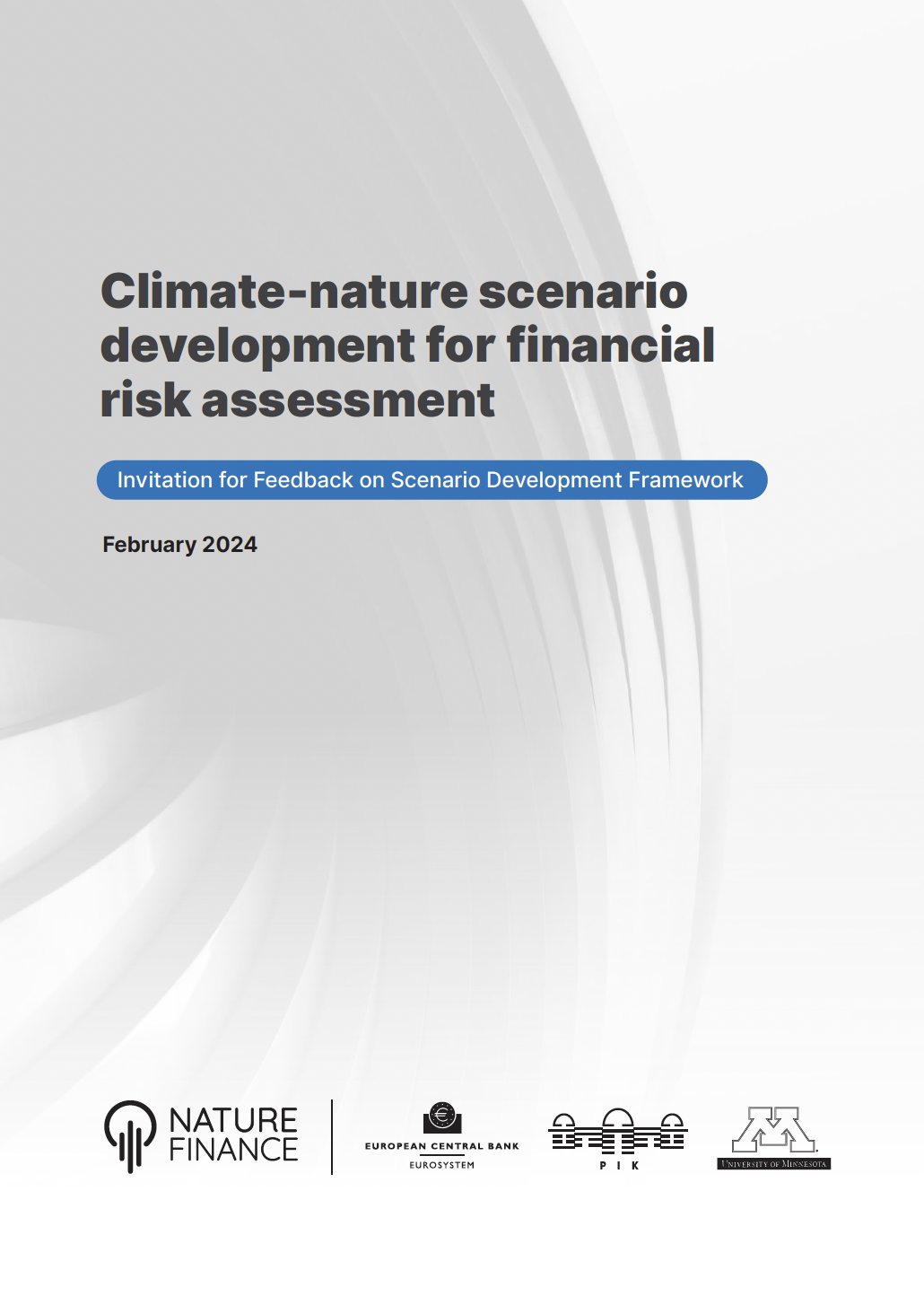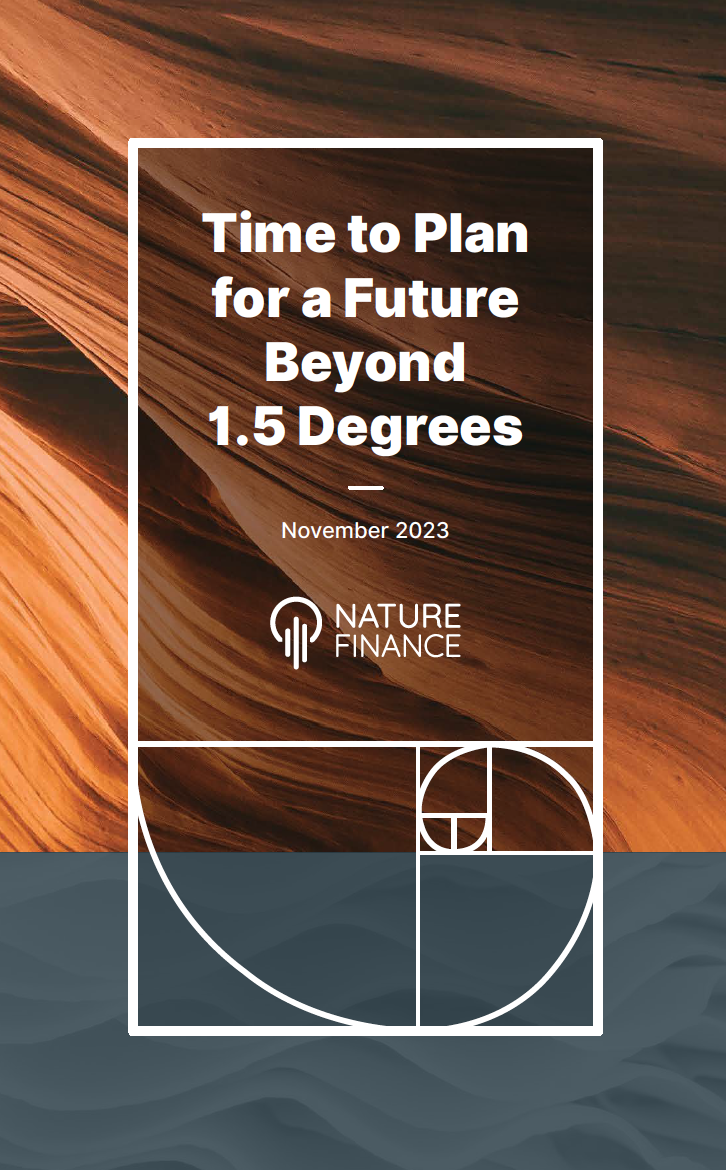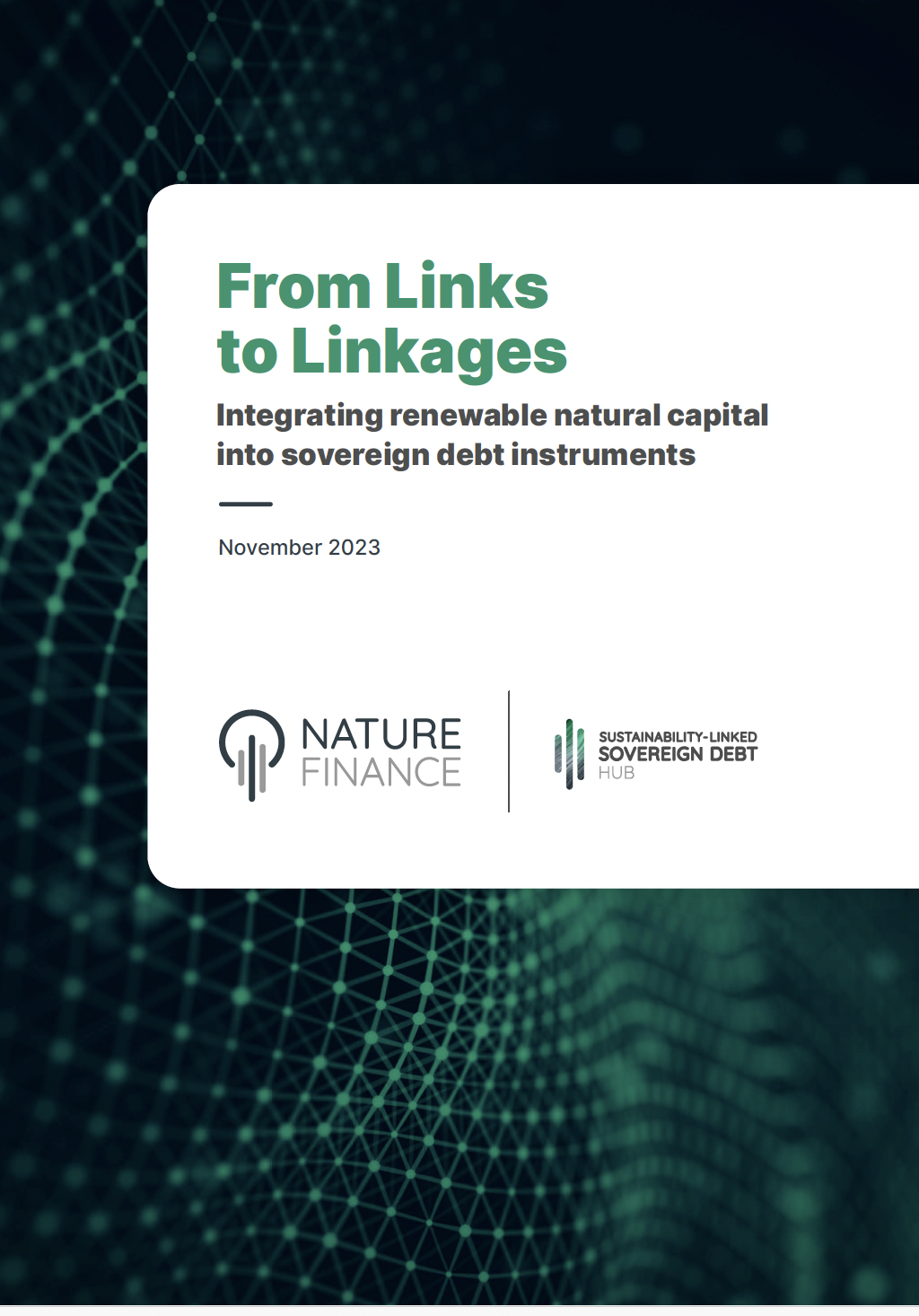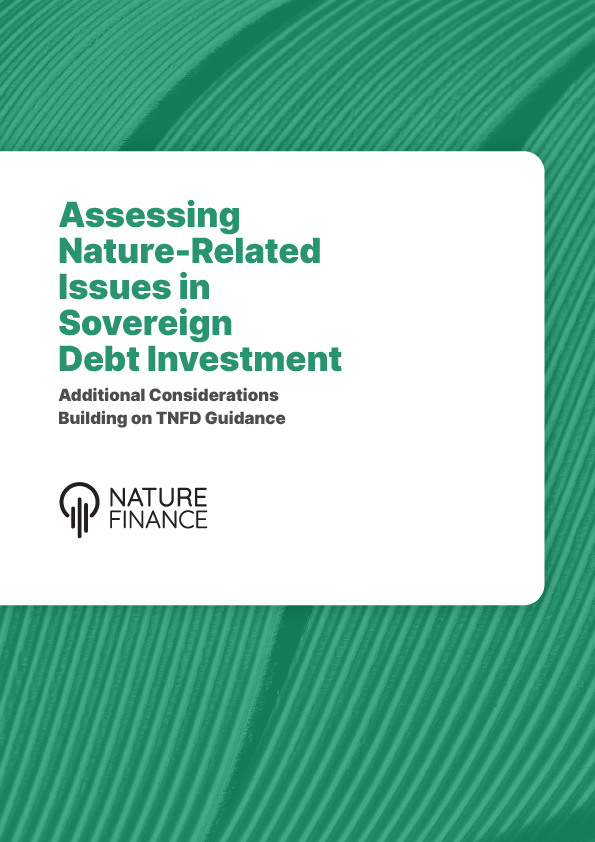Nature as a Shock Absorber: A Financial Materiality Assessment of Forestry-linked Sovereign Indicators in Ghana
In today’s rapidly shifting geopolitical landscape, international aid funding—including from major donors like USAID—is being cut, leaving many nature-rich countries of the Global South in an increasingly precarious position. At the same time, the twin crises of climate change and nature loss are undermining economic resilience, pushing sovereigns into a vicious cycle where escalating nature loss and climate shocks negatively impacts countries’ creditworthiness, constrains borrowing, and limits investment in climate adaptation, livelihoods, and broader development.
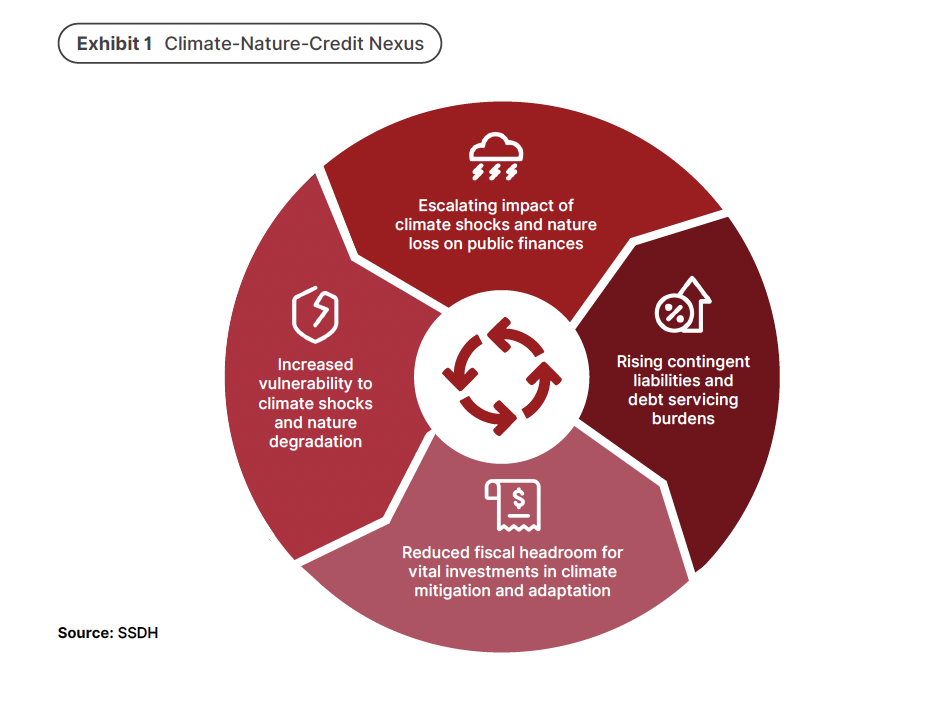
Against this backdrop, our latest report comes at a critical moment and proposes a compelling alternative: leveraging Sustainability-Linked Sovereign Financing (SLSF) as a pathway to go from a vicious to a virtuous cycle. By aligning public financial management with sustainability goals, countries can unlock vital investments in nature, enhance sovereign credit ratings, and drive climate and equity outcomes.
Unlocking Credit Potential Through Nature: The Financial Materiality Assessment (FIMA) Framework
This report introduces the Financial Materiality Assessment (FIMA) framework, whichintegrates nature and climate considerations into sovereign debt analysis. By evaluating key sustainability indicators through a credit risk lens, FIMA demonstrates how financially material sustainability targets—such as deforestation reduction—can help to improve financing conditions, stabilize public debt dynamics, and support sovereign credit ratings.
In other words, there is a reinforcement mechanism that comes to play: through commitment of governments (issuers) to embed key performance indicators (KPIs) into their financing structures, an alignment with policies is created and performance is impacted. This leads to increased resilience of the sovereigns.
Such reinforcement mechanism works through:
- Rewarding Alignment ensuring that meeting commitments leads to tangible benefits.
- Redirecting Funding allowing resources to flow into impactful areas.
- Reinforcing Commitment strengthening trust in the financial system.
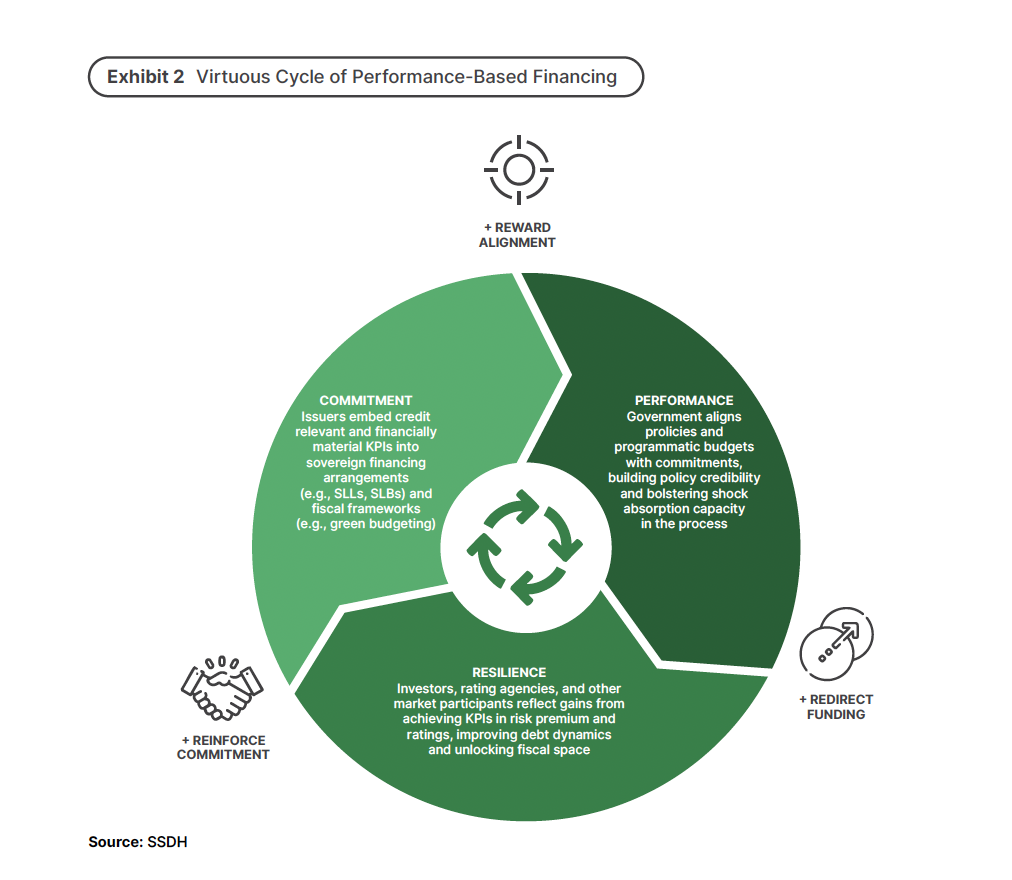
Overall, this cycle suggests that integrating financial KPIs into sovereign frameworks can create a self-reinforcing loop of credibility, financial stability, and resilience.
Why This Matters:
- Bridging sustainability and sovereign creditworthiness – The FIMA framework assesses key performance indicators (KPIs) based on their potential to strengthen credit profiles, making sustainability-linked debt more attractive to investors.
- Demonstrating potential real-world impact – Ghana is used as a case study to show how targeting deforestation could boost the country’s sovereign credit rating by up to two notches, proving that policies that preserve nature can drive economic resilience.
- Quantifying financial benefits – Ghana could generate between $93 million and $935 million annually from carbon credits linked to reduced deforestation, providing much-needed fiscal space for further climate adaptation investments.
Ghana: A Case Study for Sustainable Investment in Resilience-enhancing Efforts
The report applies the FIMA framework to Ghana, where climate change and environmental degradation are already taking a heavy toll on economic stability. With cocoa exports declining from $2.8 billion in 2021 to $1.5 billion in 2023 due to environmental pressures (amongst other factors), the need for a sustainable financial model is urgent.
Key findings from the case study include:
- Economic growth potential – Sustainability-linked policies targeting deforestation could increase Ghana’s GDP by up to 1 percentage point annually, leading to an 18% cumulative increase in GDP by 2050.
- Fiscal and credit rating benefits – Revenue from carbon credits and improved debt management could contribute to an additional sovereign rating upgrade, improving Ghana’s access to international finance.
- A way out of debt distress – Unlike conventional, extractive growth strategies, nature-based solutions provide a sustainable path to economic resilience and financial stability.
With climate and nature risks increasingly being recognized as core credit factors, this report underscores the growing relevance of tracking sustainability indicators in sovereign debt markets. Within this context, the FIMA framework provides a clear roadmap for countries to leverage their natural capital for credit enhancement, arguing that nature should start to be understood and deployed as a credit-positive asset.
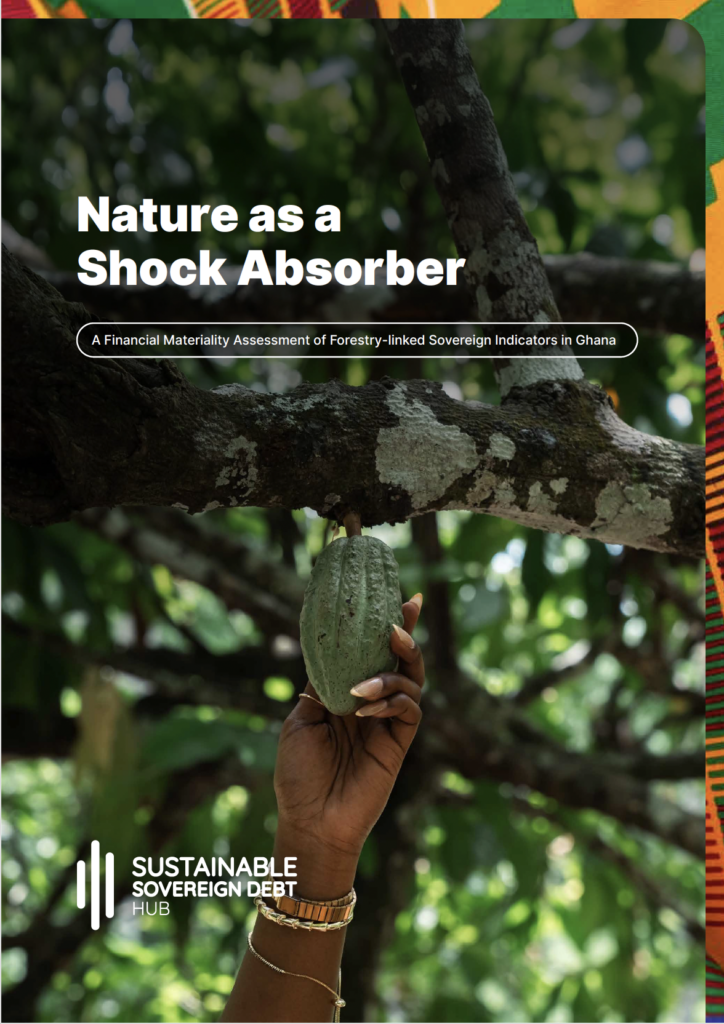
Read the Full Report and find out how Sustainability-Linked Sovereign Financing can help nations build economic resilience while advancing global climate and nature goals.
– – – – – – – – – – – –
Contact
For media and communications enquiries: Anastasia Biselli, Communications & Engagement Coordinator, anastasia.biselli@naturefinance.net
For additional information: Martina Tamvakou, Program Manager Innovative Finance & SSDH, martina.tamvakou@naturefinance.net
